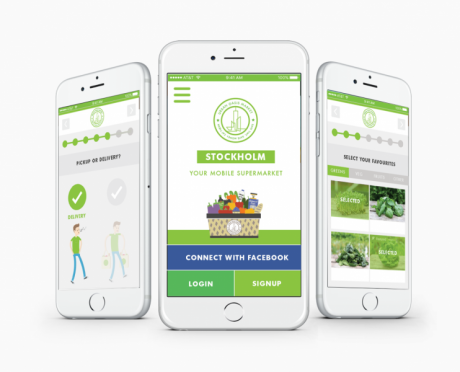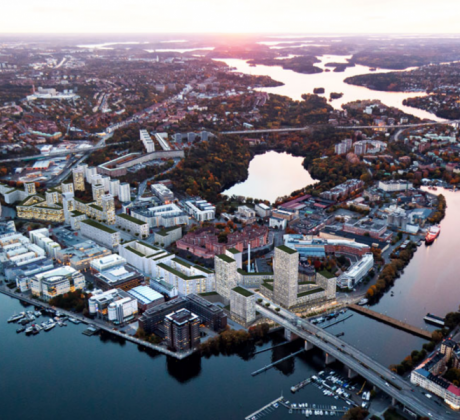Does this sound like it’s from a sci-fi movie? An empty, underground car park with huge metal cylinder tanks spread throughout. Inside these tanks you can find… lettuce, pak choy, kale, coriander, and even strawberries – in the middle of winter!
All of these nutritious plants grown vertically in layers, fed with just the right amount of nutrients and water they need. This is hydroponics. Controlled with artificial intelligence which monitors the plants and ensuring optimum air flow, temperature and lighting conditions, maybe even better than outside!
 Urban Oasis-prototype of mobile phone application Courtesy of Urban Oasis. All rights reserved.
Urban Oasis-prototype of mobile phone application Courtesy of Urban Oasis. All rights reserved.  Liljeholmen in Stockholm and its surroundings. Courtesy of Urban Oasis. All right reserved.
Liljeholmen in Stockholm and its surroundings. Courtesy of Urban Oasis. All right reserved.